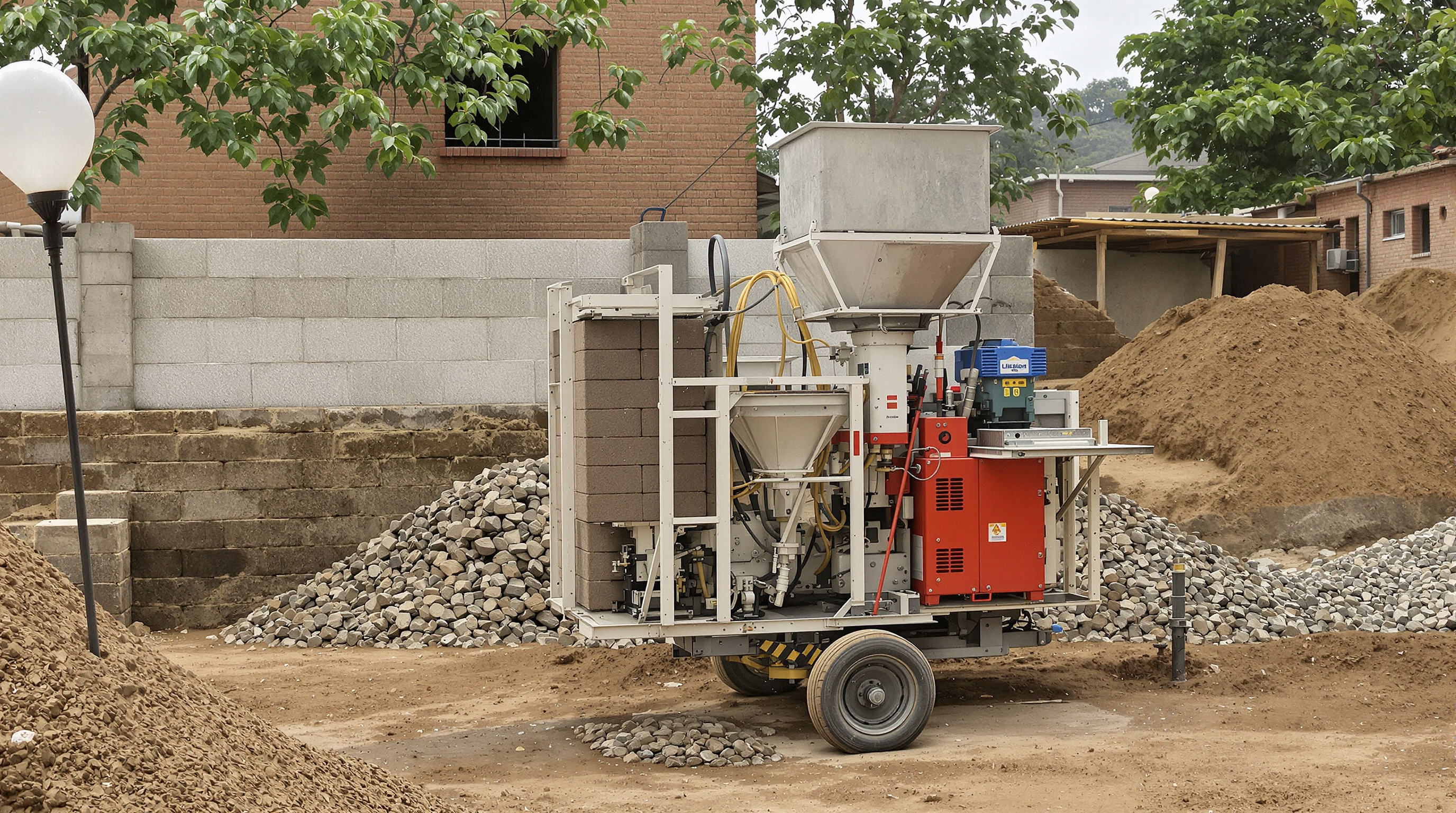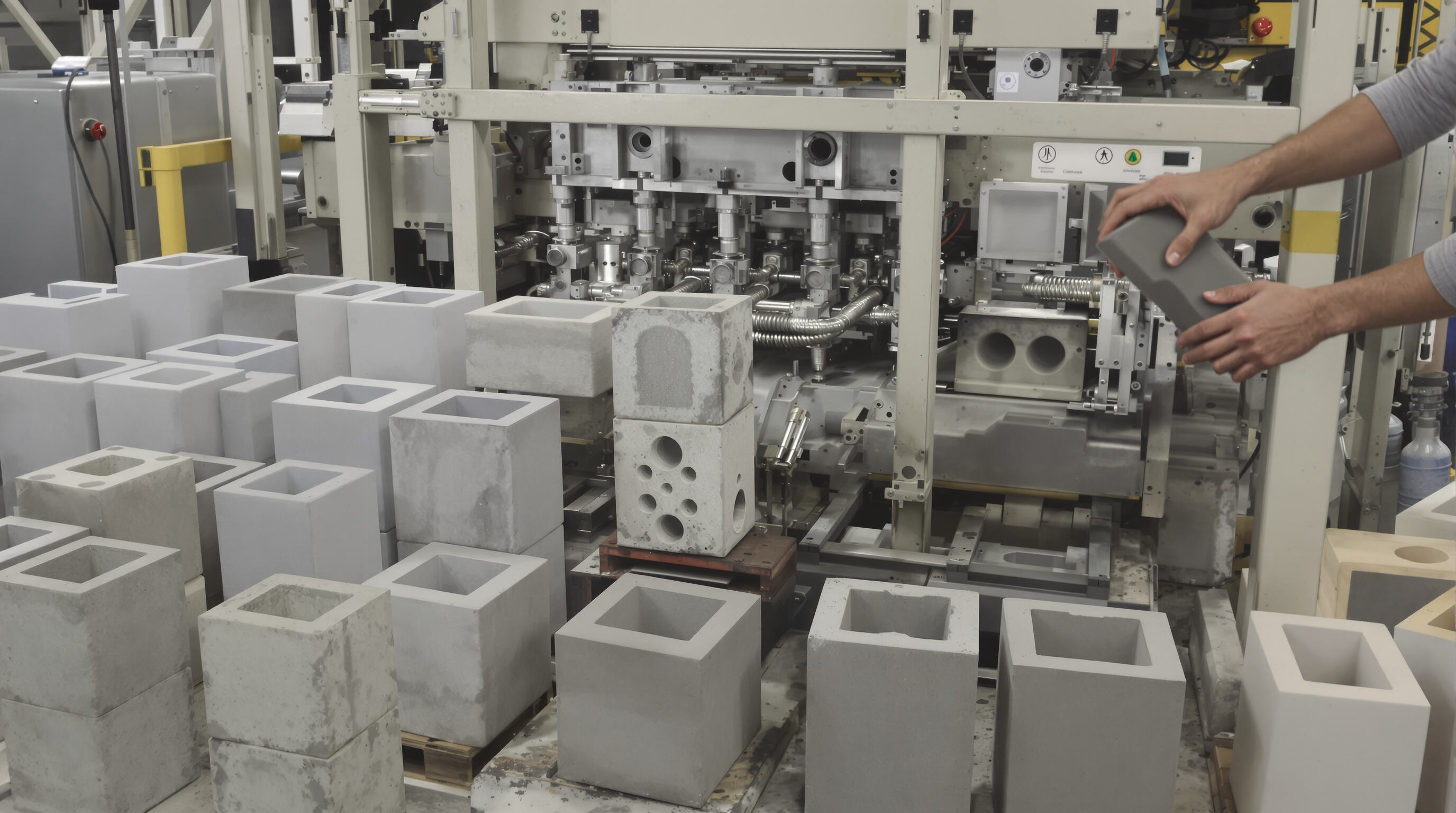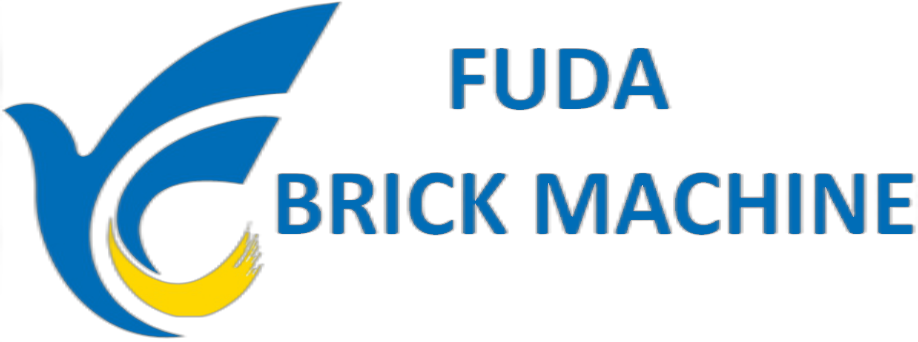Understanding the Mobile Block Making Machine and Its Role in Modern Construction

What Defines a Mobile Block Making Machine?
Mobile block makers combine compacting systems with feeding mechanisms all mounted on wheels, so there's no need to dig holes or pour concrete for foundations anymore. These portable setups are different from their fixed counterparts because they sit on standard trailers and get moved around job sites easily. Once set up at a new location, operators just grab whatever aggregate is available nearby and start cranking out blocks right away. What makes them work so well? Most have those big hydraulic tables that shake the mix into place, plus molds that snap open and shut quickly. A single person can run the whole operation without needing help from warehouses or supply chains, which saves time and money when working on construction projects across multiple locations.
The Evolution of On-Site Construction Applications
Mobile block machines used to be seen only in small rural construction projects, but these days they're helping speed up infrastructure work all over remote areas and tough terrain. These machines really shine when getting materials to the site is difficult, like on winding mountain roads or between islands connected by boats. The Global Construction Review reported last year that this approach cuts down logistics costs by around 40%. When blocks get made right there at the construction site instead of being shipped long distances, it means fewer damaged materials during transport. This matters a lot in places where roads aren't great or transportation options are limited.
How Portability Enhances Construction Efficiency and Project Timelines
Mobile machines streamline construction through three key efficiencies:
- Immediate resource utilization: On-site processing of excavated materials within hours
- Continuous workflow synchronization: Blocks produced adjacent to masonry crews
- Zero transport delays: Eliminates 3–7 day waits for off-site deliveries
Projects using mobile units complete foundations 30% faster (Journal of Construction Engineering), with significant impact on urgent builds like remote hospitals and disaster-relief housing. Reduced truck traffic also lowers carbon emissions by 18 tons per 10,000 blocks.
Comparing Mobile, Stationary, and Semi-Automatic Block Making Machines
Key Differences in Design, Output, and Deployment Flexibility
Construction site work gets much easier when using mobile machines since there's no need to move blocks around all day long. Stationary plants tell another story though. These need big central buildings and lots of supporting infrastructure just to get going. Sure, they can handle massive production runs with all sorts of complicated block designs thanks to their fully automated processes, but that comes at a price point both literally and figuratively speaking. Semi automatic versions sit somewhere between these extremes. They cut down on setup time without needing extensive groundwork, while still beating out purely manual operations in terms of productivity. When deciding what kind of equipment makes sense for a job, most contractors look at how big the project really is. Big scale jobs where everything needs to be exactly the same usually call for fixed installations, whereas smaller projects spread across multiple locations tend to benefit from having mobile solutions available instead.
Why the Mobile Block Making Machine Excels in Remote and Dynamic Sites
Moving those prefabricated blocks gets really expensive once they need to go over 30 miles away from the factory. The price jumps about $1.50 for every additional mile traveled. That's why mobile construction units have become so important for building projects in remote areas. These machines are basically all-in-one solutions that can be moved around quickly between different parts of a jobsite, even during big highway expansion projects, and they don't require any special foundations to operate. Most contractors prefer to work with materials dug right from nearby locations instead of waiting for shipments from far away. This approach cuts down on delivery time issues and also means nobody has to worry about damages happening during transport. For communities developing in stages, like when a new township starts growing, having these blocks made right there at the construction site makes sense. It lets workers cure the concrete properly without worrying about bad weather messing up their schedule.
Trade-Offs: Balancing Portability with Production Stability
Mobile units definitely bring something special to the table when it comes to flexibility, but they do have their limitations. The ground has to be leveled just right before starting any batch because if it's off balance, the whole curing process gets messed up. During rainy season especially, temporary setups just cant match what stationary plants can do for maintaining proper humidity levels. Still there are ways around these issues. Hydraulic jacks and those modular enclosures make a big difference in keeping things stable on site. When everything is set up properly, most mobile operations hit around 85% of what fixed installations produce. For short term projects lasting less than seven months, this kind of performance makes sense financially since moving equipment elsewhere would cost way too much money.
Mold Versatility and Custom Block Production in Mobile Units

Modern mobile block making machines support rapid adaptation through advanced mold systems. Contractors can produce 8–15 block variations daily, with tool-free mold swaps taking under 20 minutes. This responsiveness meets growing demand for specialized blocks in infrastructure and architectural work without disrupting production schedules.
How Quick-Swap Mold Systems Expand On-Site Design Options
The best modern equipment comes with universal mold frames that take different inserts, so they can make everything from small 200x100x80mm paving stones right up to big 600x300x200mm wall blocks for retaining walls. A recent look at industry data shows something interesting too - companies working with these flexible systems saw their design changes cut down by around three quarters when compared to older fixed mold setups. What really stands out is how versatile these machines actually are. Workers don't just stick to making regular hollow blocks all day long. They switch over to creating fancy textured surfaces for buildings during the same work period, which means they can respond quickly when site conditions change unexpectedly.
Producing Interlocking, Hollow Core, and Architectural Blocks On-Demand
Three core block types dominate mobile machine output due to their site-specific benefits:
| Block Type | Structural Advantage | Typical Application |
|---|---|---|
| Interlocking | 40% faster installation | Earthquake-prone foundations |
| Hollow Core | 55% material efficiency | Insulated partition walls |
| Architectural | Custom surface patterns | Historic restoration projects |
This adaptability is crucial in remote locations where transporting multiple block types is impractical.
Case Study: Custom Blocks for Rural Infrastructure Using Mobile Machines
In 2024, construction crews working on a bridge across Nepal's rugged Himalayan terrain needed special curved blocks to stop erosion from damaging the foundation. The usual shipping methods were a disaster though, with nearly two thirds of the blocks breaking during transport over those steep mountain roads. So engineers brought in a portable manufacturing unit equipped with computer controlled cutting tools. They started making their own blocks right there on site, churning out around 1,200 pieces each day from locally sourced materials. This cut transportation expenses by almost $18k and meant they could tweak designs whenever the ground conditions shifted unexpectedly. What this project really showed was how adaptable on site manufacturing can be when dealing with tough environmental challenges where standard approaches just don't work.
Production Capacity, Efficiency, and Operational Optimization
Typical Output: 500 to 2,000 Blocks Per Day in Real-World Conditions
Most mobile block makers churn out somewhere between 500 to 2000 blocks each day when working on site. The actual number depends on what kind of blocks are being made. Standard hollow blocks tend to come out faster since they're simpler, but things slow down quite a bit with interlocking designs or special shapes, cutting production by around 15 to 25 percent. Stationary block plants can crank out over 5000 units in a single day, no doubt about it. But that's not really the point here. What makes mobile units so valuable is their ability to get set up quickly and work wherever needed. That's why construction crews love them for emergency repairs or building projects far from main supply routes where traditional equipment just won't do.
Factors Influencing Output: Labor, Materials, and Machine Uptime
Three primary factors affect daily output:
- Labor efficiency: Inexperienced crews increase cycle errors; skilled teams reduce rework by 20%.
- Material readiness: Wet weather or inconsistent aggregate quality extends curing times.
- Machine reliability: Hydraulic leaks and component wear cause 30% of downtime in sandy environments. Proactive filter maintenance in dusty conditions reduces stoppages by 40%.
Maximizing ROI Through Crew Scheduling and Maintenance Planning
Optimizing operations boosts return on investment:
- Rotational shifts: Staggered 10-hour shifts maintain continuous production without handover delays.
- Predictive maintenance: Replacing high-wear components like vibration pads and conveyor rollers every 1,000 hours prevents major breakdowns.
-
Material-timing sync: Aligning aggregate deliveries with non-production periods avoids workflow interruptions.
These strategies push annual utilization above 85%, lowering block costs by $0.12 per unit. Companies applying this approach typically recoup machine investments within 14 months.
Durability, Cost Value, and Future Trends in Mobile Block Making Machines
Built for the Field: Rugged Design and Performance in Harsh Conditions
Mobile block machines are built tough with heavy duty steel frames that can be as thick as 12 mm, plus all sorts of parts that resist rust even after sitting through 10,000 testing hours in some pretty harsh conditions. The vibration tables on these machines can handle an incredible 500,000 cycles at 5,000 RPM speeds without losing much more than 1.5 mm in accuracy. Speaking of reliability, the hydraulic systems work just fine whether it's freezing cold at -15 degrees Celsius or sweltering hot at 50 degrees. And when things do go wrong? That's where the modular design comes in handy. Most mechanical problems can be fixed within three days for about 98% of issues, which makes all the difference for companies operating in places prone to flooding or dealing with desert heat.
Total Cost of Ownership: Savings on Transport, Labor, and Logistics
When companies spread out their production instead of keeping everything centralized, mobile units can slash material transport expenses by around 18%, according to the latest Construction Logistics Report. Plus, workers spend 22% less time waiting around because adjustments happen right there on site. Take a mobile setup costing about $10k as an example it usually pays for itself within just 14 months if making roughly 1,200 blocks each day. That's almost half the time needed for traditional fixed installations which demand over $35k upfront just for basic infrastructure. Real world experience shows businesses are saving between seven thousand two hundred dollars and fifteen grand annually on most projects thanks to less wasted materials and better oversight during construction.
Next-Gen Innovations: IoT, Solar Power, and Sustainable Block Production
New tech is completely changing how we produce mobile blocks these days. The latest IoT sensors can actually forecast when molds will start wearing out, getting it right around 92 times out of 100. This kind of predictive maintenance helps cut down on wasted materials by roughly 17 percent across most operations. We're also seeing solar powered hybrid units making waves in the industry. These machines slash energy bills by about 30% but still manage to churn out 400 blocks every hour, making them perfect for remote construction sites where grid connection isn't possible. Another big development comes from geopolymer concrete alternatives that leave behind only about half the carbon emissions compared to regular cement. Many companies are starting to build these eco-friendly options directly into their mobile production systems as part of broader sustainability efforts. Looking ahead, surveys show that well over 60% of manufacturers intend to roll out carbon neutral mobile equipment by 2028. They'll be using things like recycled building materials mixed with smart compaction software that learns from real world conditions rather than just following preset formulas.
FAQs About Mobile Block Making Machines
What are the primary benefits of using mobile block making machines?
Mobile block making machines offer the benefits of on-site block production, reduced transportation costs, quick setup, and flexibility in producing various block designs.
How does the mobility of these machines enhance construction projects?
The mobility allows construction crews to produce blocks right at the site, significantly reducing transport delays, costs, and damages during transit. It enables quick adaptation to site conditions, especially in remote areas.
Are there any downsides to mobile block making machines?
While offering flexibility, mobile machines require level ground and can have limitations in humidity control compared to stationary units. Proper setups with hydraulic jacks and modular enclosures can mitigate these issues.
What types of blocks can mobile machines produce?
Mobile block making machines can produce a variety of blocks including interlocking, hollow core, and architectural blocks, tailored to specific site needs.
How do modern advancements like IoT and solar power impact these machines?
IoT enables predictive maintenance, reducing material wastage, while solar power provides energy-efficient solutions for remote sites. These advancements enhance sustainability and operational efficiency.
Table of Contents
- Understanding the Mobile Block Making Machine and Its Role in Modern Construction
- Comparing Mobile, Stationary, and Semi-Automatic Block Making Machines
- Mold Versatility and Custom Block Production in Mobile Units
- Production Capacity, Efficiency, and Operational Optimization
- Durability, Cost Value, and Future Trends in Mobile Block Making Machines
-
FAQs About Mobile Block Making Machines
- What are the primary benefits of using mobile block making machines?
- How does the mobility of these machines enhance construction projects?
- Are there any downsides to mobile block making machines?
- What types of blocks can mobile machines produce?
- How do modern advancements like IoT and solar power impact these machines?

